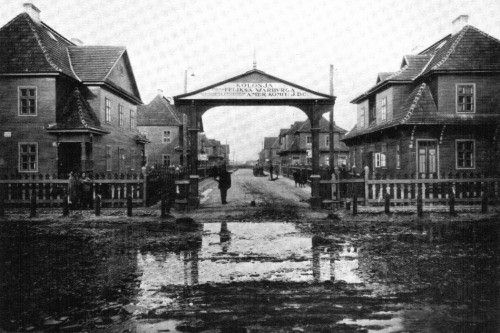 |
|
In 1922 I was sent by the Joint to Brest to oversee the Joint's many-sided relief, welfare, and assistance activities. We began with a budget of $100,000 that rapidly grew tenfold. Our activities concerned the following:
|
|
|
|
(Pictures from Image Before our Eyes) |
One of our most significant activities was the construction of Jewish schools in Brest. We established many schools of all the various factions - General Zionist, Tarbut, Talmud Torahs, yeshivas – all of which had been destroyed in the war. The Joint could not leave the city without schools – although we did not interfere in policy matters of education. Therefore, we paid great attention and effort in establishing the same schools that had existed in Brest previously. A huge and bitter political fight between the leaders of all these different factions resulted - with the Joint office trying to solve the educational issues. Every faction was afraid that they would lose their power and influence to their political opponents.
We established an orphanage hostel for the orphaned and abandoned children of Brest, which we divided between the various factions, according to the numbers in their schools. The Joint also established a large trades school that taught trades such as metalwork, lock smithing and carpentry; it was well equipped with instruments and machinery. In 1924 this school was handed over to the ORT organization and existed until the outbreak of W.W.2.
|
JewishGen, Inc. makes no representations regarding the accuracy of
the translation. The reader may wish to refer to the original material
for verification.
JewishGen is not responsible for inaccuracies or omissions in the original work and cannot rewrite or edit the text to correct inaccuracies and/or omissions.
Our mission is to produce a translation of the original work and we cannot verify the accuracy of statements or alter facts cited.
 Brest Lit(owsk), Belarus
Brest Lit(owsk), Belarus
 Yizkor Book Project
Yizkor Book Project
 JewishGen Home Page
JewishGen Home Page
Copyright © 1999-2025 by JewishGen, Inc.
Updated 3 Dec 2005 LA